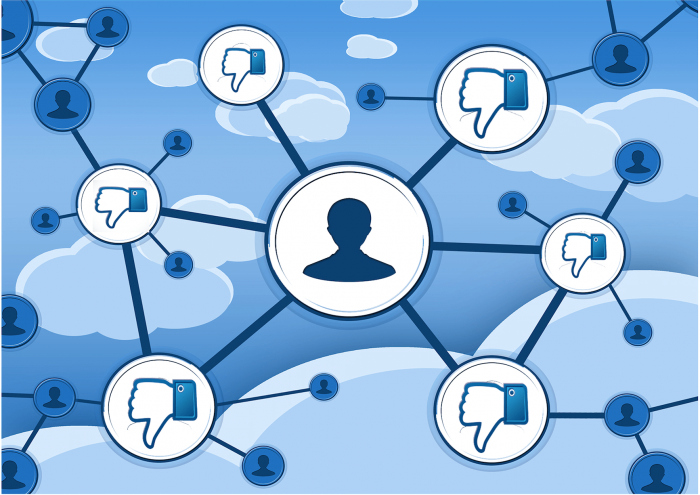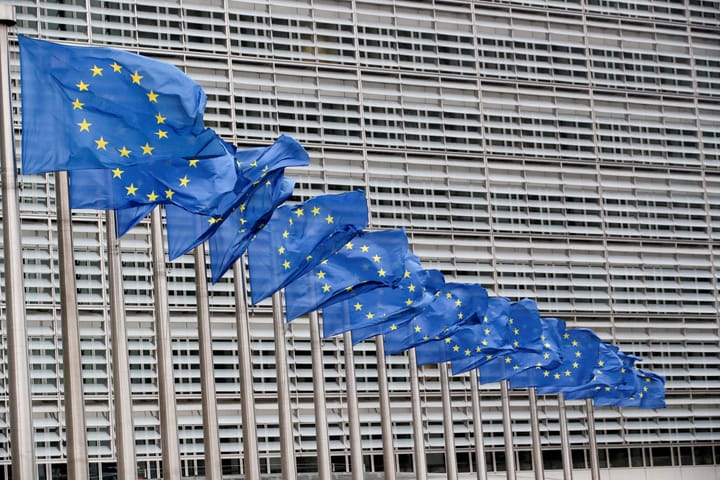How the Russia-backed disinformation campaign uses Twitter

A few minutes every morning is all you need.
Stay up to date on the world's Headlines and Human Stories. It's fun, it's factual, it's fluff-free.
Starting with the Iowa caucuses in February, the 2020 US presidential campaign began in earnest, but Russia’s disinformation campaign reportedly started far earlier.
In the years after the 2016 election, intelligence officials and data scientists have come to the same conclusion: Russian agents used troll farms to spread discord and deepen divides in America.
While the term “troll” on the internet generally refers to an aggressively antagonistic persona, experts warn that Russian trolls stir the pot by building up alliances, not tearing them down. By capitalizing on the beliefs and biases of social media users, these troll accounts build substantial audiences who unknowingly spread disinformation.
The 2020 presidential campaign
In his testimony to Congress in July 2019, special counsel Robert Mueller gave a stark warning about Russian efforts to undermine US elections: “They’re doing it as we sit here. And they expect to do it during the next campaign.”
Mueller and his team of investigators were appointed to determine if President Donald Trump had coordinated with Russia in its attempts to interfere in the 2016 election.
The Mueller Report did not establish a link between Russia and the Trump campaign. However, Mueller charged 13 members of Russia’s Internet Research Agency (IRA) with interfering in the election.
In February 2020, reports surfaced that Russia was once again working to help Trump win the election. Trump denied Russia has ever helped him or that they were going to.
Likewise, Russian President Vladimir Putin has consistently denied that his government had any part in election meddling in 2016, and he has denied that it intends to interfere in the 2020 election.
US intelligence agencies, bipartisan government bodies and independent researchers have however, insisted that Russian election interference has and will continue to happen, particularly on social media.
A friendly face
Writing for Rolling Stone in November 2019, Darren Linvill and Patrick Warren explained that Russia’s social media activities were directed by the IRA, which was once a separate agency, but now operates under Russia’s Federal News Agency.
Citing two now-deleted Twitter accounts, @IamTyraJackson and @PoliteMelanie, Linvill and Warren explained how Russian-backed accounts operate. Instead of stirring up anger by attacking other users, the accounts build an audience with seemingly innocuous, “heartwarming messages” or by playing into existing ideological biases within groups.
For the disinformation campaign, the point isn’t promoting one political side over another. The goal is “to serve Russia’s interests in undermining Americans’ trust in our institutions.”
That often involves attacking moderate politicians “as a method of bolstering more polarizing candidates.”
For instance, even as the disinformation campaign sought to bolster Trump’s election chances, Polite Melanie promoted liberal causes. As Linvill and Warren ominously warned, “Effective disinformation is embedded in an account you agree with.”
A long operation
In June 2019, Politico reported on research by Symantec, a cybersecurity firm that investigated Russian troll efforts during the 2016 presidential campaign. They studied 3,900 accounts that had been suspended by Twitter, with a total of 10 million tweets.
Accounts were often created well in advance of being used. On average, there were 177 days between the creation of an account and the first tweet. That suggests the Russian campaign was built on patience, with an eye on the long game.
What to expect in 2020

On March 12, The Millennial Source contacted Linvill, an associate professor at Clemson University, to ask how Russian efforts would differ in 2020.
“Many disinformation campaigns have gotten more sophisticated,” Linvill replied. “This is particularly true for state affiliated campaigns. Back in 2016 the Russians could do whatever they want[ed]. They had very poor operational security. They paid for Facebook ads in Rubles! Their accounts were all tightly networked together (retweeting and mentioning one another for mutual benefit).
“They could do this because no one suspected what they were doing. Now, everyone is watching. They have to be much more sophisticated and much more careful. I have observed a variety of changes in behavior with the clear goal of keeping a lower profile. I know the platforms have a more difficult time tracing technical signals then [sic] they used to.”
Linvill also had advice for how Americans can avoid being manipulated by social media disinformation.
“Regular citizens need to realize that the rules of engaging with other people are not different online than they are in the real world.”
Linvill went on to warn against simply repeating what anonymous strangers “wearing masks” online have to say.
“Reasonable people would never engage with an anonymous stranger wearing a mask in the real world, and yet feel completely comfortable doing so online. People need to realize the rules are the same online.”
America on Twitter
While the percentage of Americans who use Twitter is only 22%, far lower than the 69% on Facebook, its users tend to be better educated and more politically engaged. With the platform providing direct access to journalists and politicians, Twitter is home to considerable political discourse.
Politicians have been turning to Twitter, nominally to engage more directly with their supporters, but also to create viral moments. It’s commonplace now to see high-ranking politicians use Twitter lingo, as former Secretary of State Hillary Clinton did in 2016 when she tweeted to Trump to “Delete your account.”
At the same time, a 2018 article in the Columbia Journalism Review explained that among the many social media platforms available, Twitter was the one most popular with journalists. That’s because it’s a “news-heavy social network” where news stories can break in real time, allowing for immediate engagement.
Furthermore, a February 2018 study of 33 major news outlets by the University of Wisconsin-Madison found that 32 had embedded at least one tweet by an IRA-operated Twitter account across 116 articles.
One of the main accounts cited by news organizations was @TEN_GOP. The now-deleted account purported to be operated by the Republican Party of Tennessee (“GOP”, an abbreviation of “Grand Old Party”, is another name for the Republican Party). That account was specifically mentioned in Mueller’s indictment of Russian agents.
Sowing discord
Notably, the Russian-backed disinformation campaign has sown distrust among the public for both institutions and individuals.
In January 2020, Senators Elizabeth Warren and Bernie Sanders had a contentious interaction during one of the Democratic debates. Warren, who has since dropped out of the presidential race, was competing with Sanders for the support of progressives in the party.
After the debate, the #NeverWarren hashtag began trending. Some users believed that the hashtag was promoted by Russian trolls or bots. However, Twitter said they found no evidence that the hashtag was being promoted inauthentically.
As Linvill and Warren wrote in Rolling Stone, “Russia’s goals are to further widen existing divisions in the American public and decrease our faith and trust in institutions that help maintain a strong democracy.”
The greater aim of the disinformation campaign, according to experts, is largely about ensuring Russia’s own interests around the world.
Russia is alleged to have used disinformation campaigns in the UK and Spain, as well as within countries within its own region. The Atlantic Council has said the efforts help enact the nation’s “foreign policy agenda that seeks to infiltrate politics, influence policy, and inculcate an alternative, pro-Russian view of the international order."
[article_ad]
Have a tip or story? Get in touch with our reporters here!




Comments ()